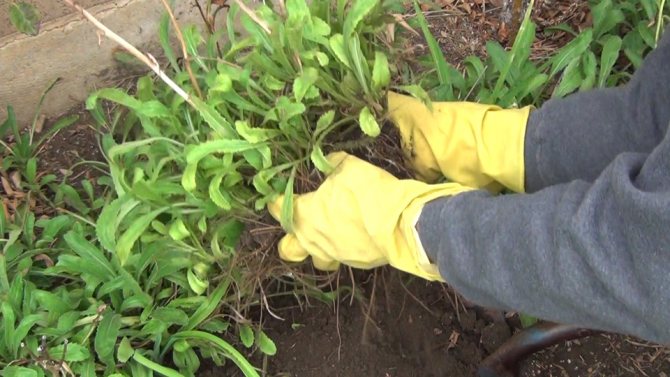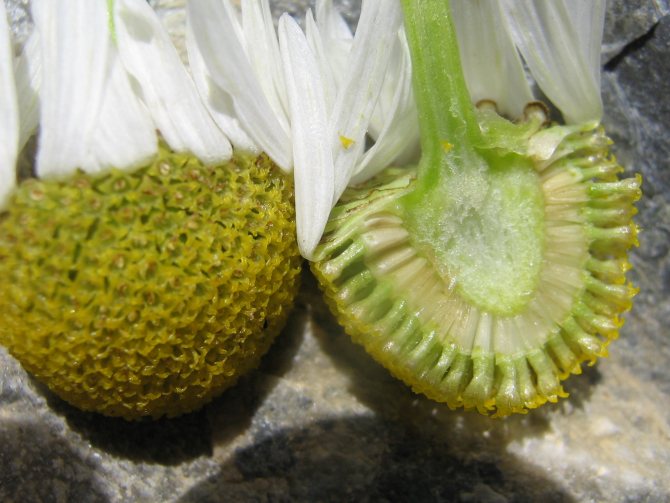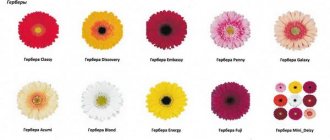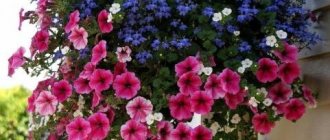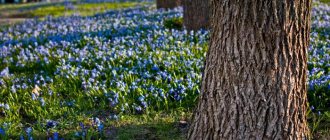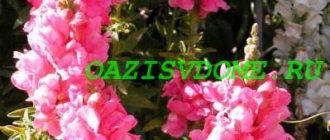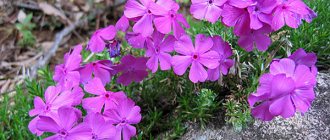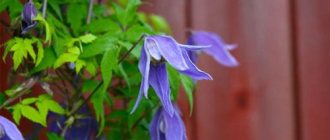It would seem that everything is known about this beautiful wildflower in the vast expanses of Russia. But not everything is so simple, and if you take a closer look at the daisies, they will open for us from a new, unusual side.
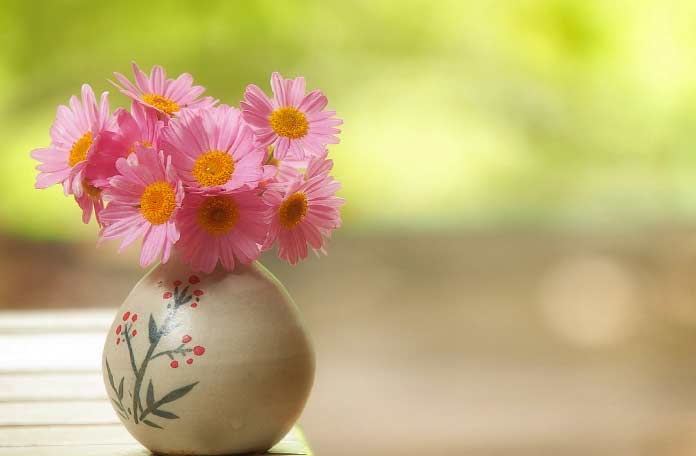
Even in ancient Greek and Roman treatises on nature, there is a description of this plant and its beneficial properties. We present in the review a photo of daisies and tell you some entertaining facts about this amazing flower.
The main external signs of daisies
Light petals and a yellow center are features that combine several completely different colors. The genus of daisies belongs to the Asteraceae family and includes more than twenty different types of herbs that bloom in the first year of their existence. All representatives of this genus are small in size. They are herbaceous and have pinnately dissected leaves.
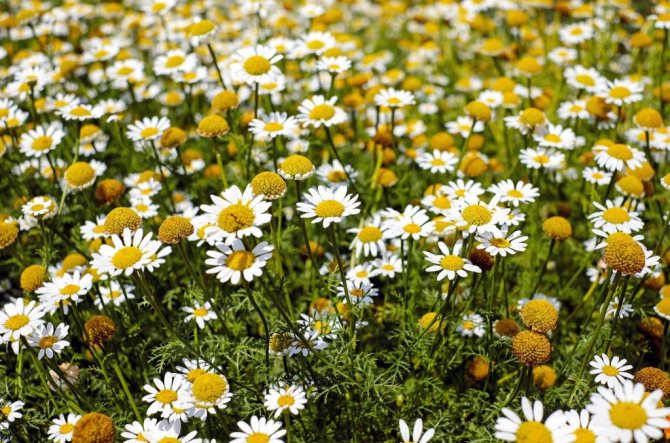

The sizes of conical or hemispherical inflorescences can vary from two to twenty centimeters in diameter. Their size directly depends on the type of flower. The baskets of these plants have two types of petals. The first is bisexual tubular. They are yellow in color. The second type is pistillate false-colored, which are colored white. The second type of petals is located at the edges, and the first is in the center.
Chamomile, green and golden
The most famous type of chamomile is the pharmacy, which in the scientific community is called Matricaria chamomilla. Her leaves are very small, simple, sessile with a pinnately dissected type of venation. Knowing these features helps distinguish the plant from species with similar inflorescences.
Real chamomile leaves look like dill leaves.
The size of chamomile inflorescences is about 2.5 cm in diameter. There are two types of flowers in its basket. On a convex receptacle, which acquires an almost conical shape as the bush ages, there are small yellow flowers with a simple perianth. White reed flowers grow along the outer contour of the receptacle, the number of which is usually 12 or 18 pieces.
At the time of flowering, the chamomile bush looks like this:
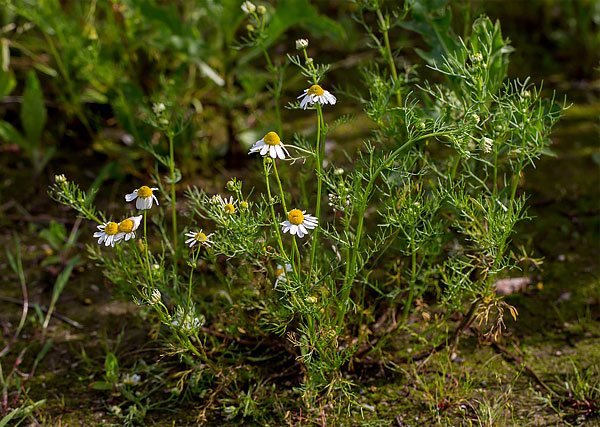

Inflorescences similar in color combination are odorless chamomile, some types of umbilicals (including dog chamomile and field chamomile), Roman chamomile, some pyrethrum and tansy.
Chamomile belongs to the genus Matricaria, which includes only 25 plants. They are considered true daisies, while other plants are called so only in common parlance, having different names.
Most Matricāria species are characterized by the same structure of inflorescences and a combination of only yellow and white flowers. The exception is green chamomile, which is also called fragrant or tongueless, and in the scientific community - Matricaria discoidea, and golden chamomile - Matricaria aurea.
On the inflorescences of green, only tubular flowers are present, which, as the name suggests, are green. She has no marginal "petals" at all. The plant is also distinguished by a strong specific smell and a small height of the bushes. As a rule, they grow up to only 20-30 cm.As you can see from the photo, they look very different from the chamomile bushes:
Quite similar to this species, golden chamomile.It differs from green mainly only in the color of the inflorescences, which in this plant is yellow. The diameter of the inflorescences is very small - no more than 0.8 cm, and the height of the bushes is about 25 cm.An important feature of the species is the fact that flower baskets can grow singly, and not in corymbose inflorescences, like most other representatives of the genus Matricaria.
What are the names of flowers similar to daisies
Chamomile has many varieties, both cultivated and native to the wild. In addition, there are a number of plants that are not its subspecies, however, have a great external similarity with it. The flowering of these crops also occurs in the summer, so it is not difficult to confuse them. Moreover, these plants have the same white petals and yellow center.
An uninitiated person may not know the name of flowers that look like chamomile. However, in the scientific environment, there are a number of names for such plants. These experts include anacillus, daisy, calendula, gelichrisum, daisies, feverfew and others. It is noteworthy that chamomile and calendula are often referred to the same genus, but this is far from the case.
In addition to similar in color, there are a number of plants that have an identical shape, but different colors. Often ignorant people call them multi-colored daisies.
Plants with multi-colored inflorescences
In some plants, inflorescences are multi-colored. Often, on one petal, 2-3, and sometimes even more, shades are combined at once. Thanks to this, the plants look very impressive and exotic.
It is also useful to read: What time do daisies bloom?
Multi-colored daisies are called:
- Gaillardia spinous;
- Osteospermum;
- Gazania;
- Venidium;
- Arctotis;
- Ursinia umbilical and other similar flowers.
Gaillardia spinous is a perennial shrub with stems up to 90 cm in height. The diameter of flower baskets is usually 7 to 12 cm. The tubular flowers located in the center are dark red or burgundy in color. The petals of this plant are three-toothed. They are colored yellow along the outer edge, and red or purple closer to the middle. In some varieties, they are arranged in several rows.
Gaillardia bushes look like this:
This plant is sometimes confused with helenium, in some varieties of which the color of the flower baskets is almost the same.
Many varieties of osteospermum are often called colored chamomile. Their inflorescences can combine a variety of shades: pink, white, red, lilac and others.
Here the photo shows tricolor osteospermum:
The abundance of color variations is also inherent in gazania. Its inflorescences are very large, and the petals are pointed. They can combine 3-4 color shades at once. The photos show some plant varieties:
On a note
Gazania and osteospermum are often grown not only outdoors, but also in pots. Thanks to their bright inflorescences and a long flowering period, they become a wonderful decoration for the home. You can grow these flowers both from seeds and by purchasing seedlings. Their prices are much higher than for seeds, however, according to reviews, they almost always take root well.
Venidium boasts even larger and brighter flower baskets. Their diameter ranges from 10 to 14 cm, and the height of the bushes can reach 80 cm. Reed flowers come with pointed or rounded edges. They come in white, yellow, orange, red and some other colors. At the same time, in almost all varieties, the middle is black, and around it, on the edge flowers, a ring of a contrasting color - brown, burgundy or purple - is outlined.
A similar color is found in arctotis. Some varieties also form a ring of a different color around the core. Moreover, its petals are more pointed, and the diameter of the baskets is slightly smaller.
Here the photo shows the Venidium bushes:
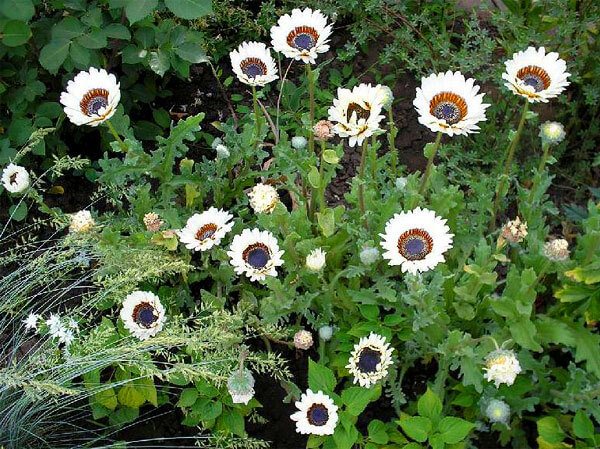

And here is the arctotis:
And this is ursinia umbilical:
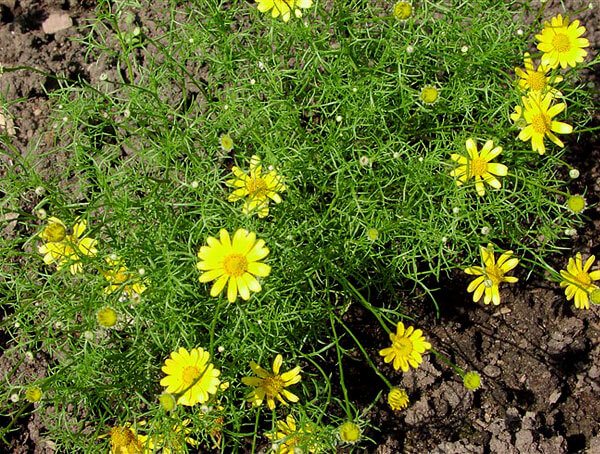

As you can see from the photo, its marginal flowers are colored at the base in a rich brown color, which smoothly turns into burgundy, and then into bright orange.
Nivyanik
This flower is more like a chamomile than the rest. The difference between the daisy lies in its size - it has more pronounced forms. It is noteworthy that, without special knowledge, the inflorescences of these two plants cannot be distinguished. Another factor that brings confusion is that the daisy is also popularly found under the name large chamomile.
The plant is a whole genus, albeit a small one. It has no more than twenty species. However, these flowers are found on all continents with the exception of Antarctica and Africa. The most famous is the largest daisy. This species is in great demand in all flower shops in the world. Its gigantic size is attractive. This flower can reach a meter in height and has beautiful double flowers with amazing petal shapes. Among flower growers, this plant is called so - large chamomile.
Pests and diseases
As for garden chamomile, it is exposed to pests and diseases, like many other plants. The most common are: fusarium, rust, powdery mildew, gray rot. In order to prevent the appearance of these diseases, you need to monitor the amount of water that chamomile receives, waterlogging of the soil has negative consequences. Systematic weeding and loosening of the earth is considered useful. The ground part of the chamomile is sprayed with fungicide solutions. If the plant is still sick, it must be removed from the flower bed so that it does not infect other flowers. As for parasites, star-winged flies, wireworms, aphids, garden thrips are dangerous for garden chamomile. You can fight them only with the help of insecticidal treatment of plants.
But yellow chamomile, in addition to being a very unpretentious plant, is practically not afraid of all kinds of pests, not to mention that it can grow even in full shade. After the plant has finished blooming, it has a decorative appearance for a long time. Yellow chamomile can grow next to any plants and flowers, even tall ones, and at the same time not suffer from it at all.
The decorative purpose of yellow daisies is their most important function, so you should know which plants are most beneficial to plant next to them. Daffodils, tulips and irises are the most suitable photot among which doronicum will grow. It looks very good in the company of perennials, at the beginning of spring it pleases the eye with its bright colors, and then sets off the flowers of perennials, which bloom later. Yellow chamomile can retain its appearance for a long time after being cut and placed in water.
Most often, yellow chamomile is planted to decorate a stone garden, or in compositions with a stone, which looks very impressive. If low-growing varieties are planted, then they cover the soil with a green carpet, which looks just great, especially in that part of the garden where most of the shade is.
When choosing which plant to plant in the garden, so that it pleases the eye, be unpretentious and persistent, it is worth stopping your attention on chamomile. Examining all aspects of the growth and development of various types of chamomiles, you can see that for a garden that, for whatever reason, will not be properly cared for, yellow chamomile will be just an ideal option. If you have no time to grow and plant new bushes, then this plant will sow itself with the help of seeds and will grow for several years, because it is a perennial, and you only need to plant them every few years. If you like to give bouquets, then yellow chamomile will not let you down here either, it is dazzlingly bright and will delight anyone, in addition, it stands in the water for a long time, which is also very pleasant. Approaching the choice of flowers for an unpretentious garden, you will not find a better option than a yellow chamomile.
Planting a daisy and caring for it
The daisy plant is planted in the middle of spring.The most favorable period is the end of March and April. In addition, some growers practice planting it in the fall. If the seeds were planted in the spring, then their germination will take a couple of weeks, and at the end of summer you can see full-fledged strong plants. However, they will bloom only next season. If the seeds are planted in the fall, the first shoots can be seen in the spring and flowering will occur in the same season.
In order to successfully plant a daisy, you need to follow some rules. The seeds of this plant are placed at a shallow depth, which should not exceed two centimeters. The distance between the plants should be at least 30 cm. It is noteworthy that when the first shoots appear, they must be carefully broken through. In this case, no more than 10 centimeters are left between the seedlings. If it is a pity to throw away excess plants, then you can not thin out, but plant some of them to another place.
For the first two years, the nivyanik will be a small bush. However, with proper care, already in the third year, you can get a powerful bush of more than 80 centimeters in diameter and about a meter in height.
Asters
Perennial asters, for example, alpine aster, are also very similar to chamomile. They bloom in different colors - there are purple, pale and bright pink, even blue shades and white. The latter are just poured daisies, only 25 cm high. Alpine aster blooms in lush color in late spring, for quite a long time.
And this is only a small fraction of the representatives of the green world, which in their structure and shape of flowers are similar to chamomile. Arctotis, ursinia, pyrethrum, gelichrisum, calendula, zinnias (majors), dimorphoteka, some varieties of dahlia and many others can safely add to this list.
Doronicum
This is also a flower that looks like a daisy. The name of the most popular species is eastern doronicum and plantain doronicum. It is a perennial plant. Belongs to the Aster family. There are about 40 varieties of this plant in the wild. Doronicum is found mainly in mountainous areas.
The bushes of this flower are able to grow in one place without transplanting for many years. The stem of this crop has low branching and good resistance to unfavorable weather. The leaves do not have petioles and are arranged alternately on the stem. The sizes of this plant can vary from 25 centimeters to one meter. It depends on the type of doronicum. The leaves are yellow or red in color and can also have different diameters. The smallest barely reach four centimeters, and the largest ten. Doronicum bloom occurs in the last month of spring and early summer. These multi-colored daisies are completely undemanding to care for. They adapt perfectly to any conditions.
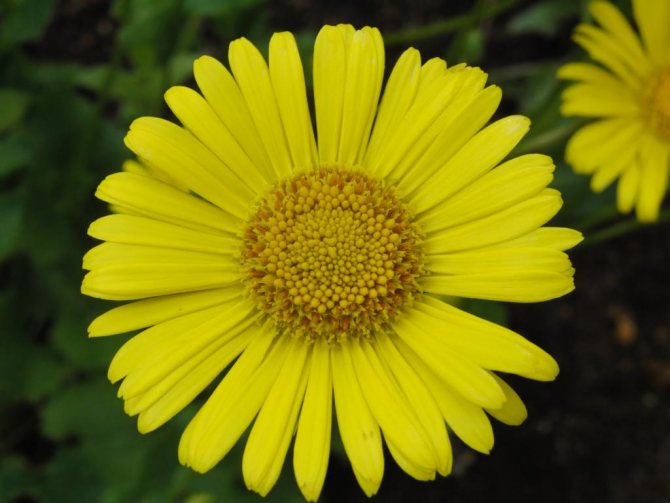

Summarize
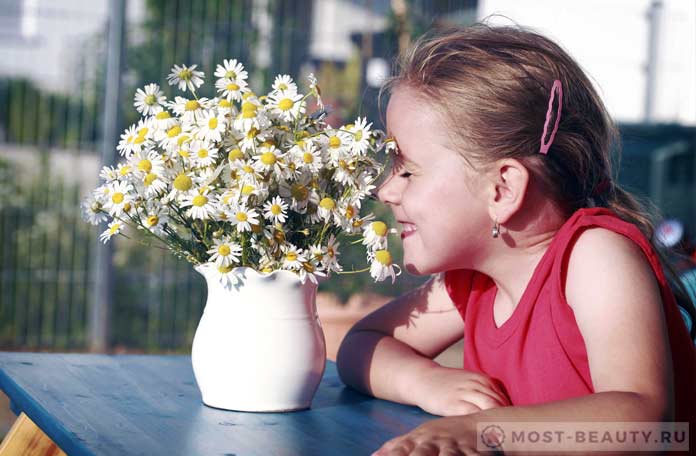

A romantic and mysterious flower throughout the history of Mankind has been used by man for various purposes. In ancient Egypt, it was used in ceremonies dedicated to the Sun God - Ra. In Russia, with the help of "Romanov's color" they treated all kinds of diseases. In Medieval Europe, the flower was used to make components for incense.
Looking at the photo of chamomile, without exaggeration, it can be argued that this is the most delicate flower, a symbol of beauty and purity.
Doronicum: planting and care in the open field
Since this flower can easily adapt to various conditions, it can be planted both in sunny meadows and in a shady garden. However, some varieties are more selective. So, for example, a plantain variety, in order to fully develop, should be planted only in a sunny place. It is also worth considering that absolutely all varieties of doronicum do not tolerate neighborhoods with large trees. Plants planted near them will fade very quickly.
Doronicum loves loose and not very dry soil. It is noteworthy that the amount of moisture should be moderate, as the excess will harm the plant.The culture has a superficial root system. In this regard, it is not recommended to loosen the soil under the flower bush itself.
Weeding also needs to be done with care. This plant needs intensive watering only in dry hot weather. The rest of the time, the doronicum almost does not need water. This is due to its powerful rhizome, which serves as a kind of moisture reservoir for the plant. It tolerates frost well and does not need additional protection.
This flower is unpretentious to care for. In order for it to develop and grow safely, it is enough not to loosen the soil near the base of the bush. Growing this plant in a summer cottage or flower bed involves a number of activities that will help maintain the desired soil moisture. In this case, mulching the topsoil would be an excellent option. It is carried out using the husk of sunflower seeds, wood chips, bark, hay, or using special materials that can be purchased at flower shops.
When the flowering period for the doronicum ends, its part, located above the surface of the earth, goes into a dormant stage. It lasts until the very end of summer. At this time, the culture practically does not need care and watering. When summer ends, the flower grows back and can often even bloom again. During this period, flower growers recommend intensively watering and fertilizing a young plant.
Reception methods
The following products are used based on this plant:
- Tea. It is made from ready-made powder in filter bags, dried or fresh plant flowers. The finished powder consists of flowers, you can buy it at the pharmacy. To make tea, you need to pour 1 sachet or 1 tsp. plants with boiling water or hot water, cover and let it brew for 15-20 minutes. If necessary, filter the solution. Drinking tea is recommended after meals. It is not recommended to consume more than 4 cups a day. Tea is used internally for systemic pathology, locally (in gynecology, ENT practice, dentistry, urological practice) or externally (for skin diseases).
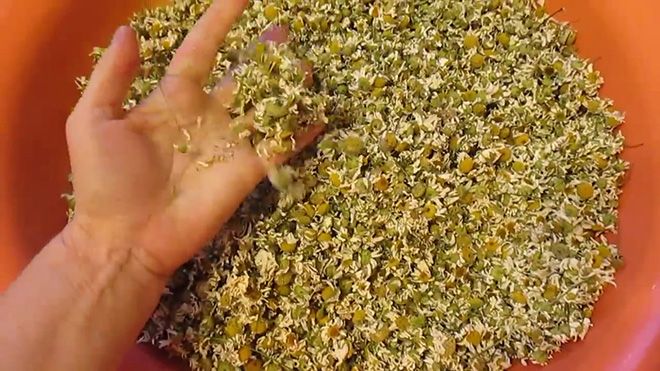

- Broth. Its difference from tea and infusion is that the resulting mixture is brought to a boil and kept on fire (steam bath) for 15 minutes. Put 1 tablespoon in the container. plants, add 1 glass of boiling water and put on the stove. Then the broth is filtered and cooled. It should be kept in the refrigerator for no more than 24 hours. It is recommended to drink it fresh. With prolonged storage of the broth, the medicinal properties may disappear. Drink the broth 3 times a day before meals.
- Infusion for oral administration. To prepare it, you will need 1 tbsp. plants (leaves) and 1 cup boiling water. The resulting mixture is infused for 2 hours. Drink infusion of 1/4 cup (50 ml) 3 times a day.
- Infusion for external use in cosmetology. To obtain it, you need to pour 4 tablespoons. plants with 1 glass of boiling water and let it brew for 1 hour. The cooled solution is used to treat the skin of the face and other parts of the body.
- Cold infusion. To obtain it, you will need 5 tbsp. chamomile flowers and 0.5 liters of cold water. The solution is infused for 8 hours, filtered and stored in the refrigerator. Used externally.
- Alcohol tincture. 1 tbsp plants are mixed with 10 tbsp. vodka and insist 10 days in a dark place. Drink 20 drops of tincture after meals with water. Do not take alcoholic tincture on an empty stomach.
- A mixture based on vegetable oil and chamomile. It is an excellent skin care product. The oil can be taken internally 15 drops before meals, added to tea, or taken with honey.
- Mix for inhalation. The resulting solution must be homogeneous and free of suspended solids.
- Broth or infusion for douching. Used for vaginitis and cervicitis.
- A decoction for instillation into the urethra.
- A decoction for medicinal baths.To prepare it, 500 g of a dry plant is poured into 2 liters of hot water, boiled for 10 minutes. The broth is cooled and filtered. The resulting mixture is added to the bath, which is taken for 2 weeks for half an hour. This treatment is effective for rashes, skin diseases and neuroses.
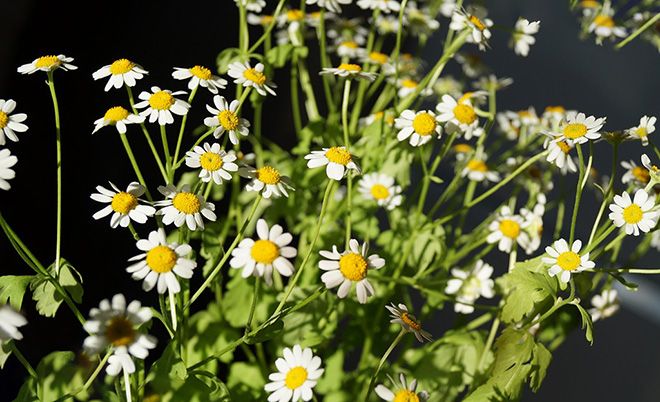

- Solution for microclysters. Helps with bloating, anal fissures, hemorrhoids, ulcerative proctitis and other rectal diseases.
- Chamomile oil. Obtained by squeezing. It is used in aromatherapy for sleep disorders, migraines, asthma and irritability.
Pyrethrum
It is a perennial plant. Pyrethrum red belongs to the Asteraceae family. It is a genus of plants that includes more than one hundred varieties. They are distinguished according to one common feature - the color of the reed flowers. They come in white or pink.
This plant is common in Europe, Asia and America. It got its name because of the special healing properties of some varieties of this flower. Scientists claim that a decoction of them can be used as a good antipyretic agent. In this case, the name itself comes from the Latin word "pyretos", which literally means "heat".
Natural beauty
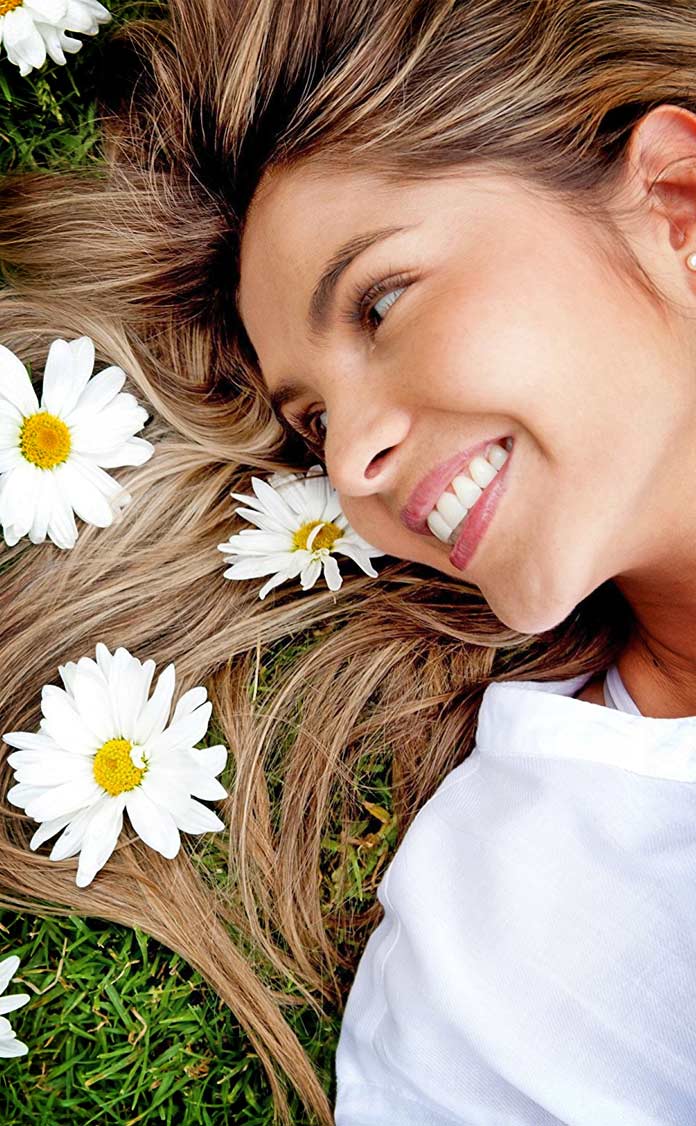

If you present a bunch of daisies or even one flower as a gift, you will thereby emphasize the natural beauty of your chosen one.
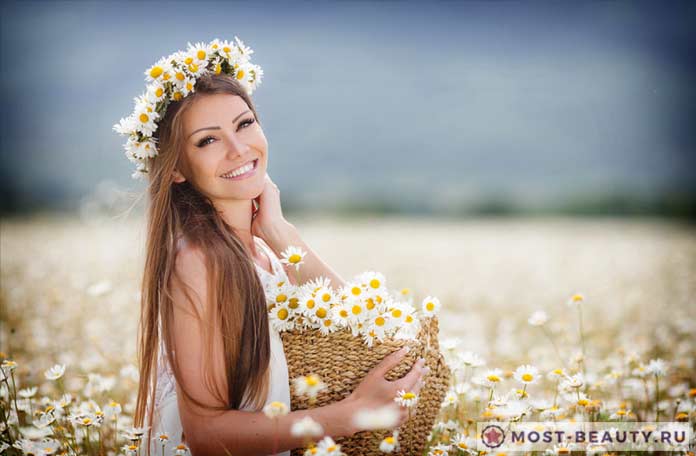

They are suitable for girls and women of any age, highlighting their natural beauty. Chamomile flowers are often used as an accessory in hairstyles or an element of decoration on clothes.
Planting feverfew
Sowing seeds should be done not earlier than April. This is due to the thermophilicity of the flower. At night, it is recommended to cover the plant with a film. This is necessary in order to protect it from possible frost. The seeds are sown at a shallow depth. In this case, it is worth planting them as rarely as possible. When the first shoots appear, it is necessary to break through them. A distance of at least eight centimeters is left between the remaining plants. However, over time, flowers need to be planted at a distance of 40-45 centimeters. Sown in the soil in the spring, feverfew will only bloom the next season.
It is noteworthy that the seeds of this culture are very small in size. Experts recommend mixing them with sand to facilitate the sowing process. However, there is an even simpler method. In this case, the seeds are spread over the surface of the soil mixture, and then sprinkled with the required amount of soil. It is recommended to water crops using a fine-dispersed spray bottle.
Propagate by seed and dividing the bush
| Dividing the bush
|
| Seeds
|
Arctotis
This flower is considered one of the most beautiful of horticultural crops. Arctotis white has a chic, richly colored greenery and exquisite inflorescences that will not leave indifferent any grower. However, these beautiful flowers are now less and less often seen in flower beds and private plots. The reasons for the decline in the popularity of these plants are not fully known.
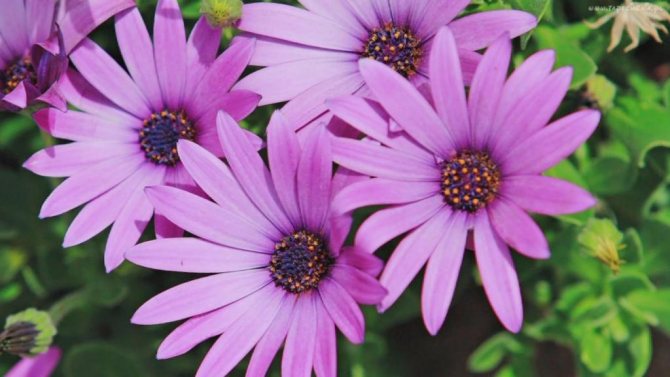

Positive emotions


The most beautiful, cheerful and delicate wildflowers are often compared to an emoticon. In any case, this flower gives only positive emotions.
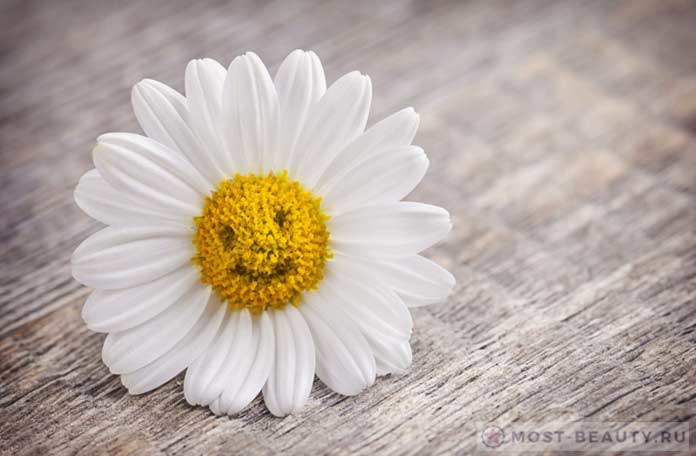

Even in childhood, it was from daisies that magnificent wreaths were made, and today screensavers on the phone or on the computer give their owners a good mood.
And a bunch of an unpretentious flower will decorate any living room and add light and space to your home. A bouquet of daisies will be a rather original surprise for a girl with a deep inner world, use this. The main thing is to make a beautiful composition out of flowers.Follow the link to find the most beautiful bouquets, among which there are photos of chamomile bouquets.
How to plant arctotis
Planting material can be easily purchased at any flower shop. The seed ripening period begins two weeks after the flowering of the plant. The seeds are tiny, so it is imperative not to miss the harvesting period. After all, after they fall, it will be almost impossible to find them. It is noteworthy that within two years after collection, they do not lose their germination.
In order to successfully grow arctotis, you must first obtain its seedlings. After that, it is already planted in open ground. Seedlings are grown in March. Florists recommend treating the soil well with potassium permanganate before planting seeds, this will help to avoid plant diseases. The resulting seedlings are planted in the last days of April and early May.
Gardeners reviews
Milaya_89
Doronicum brought home from work. I got one small spine. The jacket formed quite good. It bloomed very well for two years. Last year, after flowering, I cut the flower stalks. The bush began to slowly decay and disappear.
Nadin
In addition to rudbeckia, which also looks like a yellow chamomile, I also have doronicum and sunflower heliopsis in bloom. Both are perennials. Doronicum blooms in early spring, but the bush is not high.
Osteospermum
The plant has branched bushes on which many baskets are formed. Thanks to this, the flower, similar to chamomile, whose name is osteospermum, also has a middle name - Cape chamomile. The stem of this culture can reach 30 cm in height. Inflorescences are up to five centimeters in size. They are white, pink, purple and orange in color. The center of the flower is usually blue, but there are varieties with white, orange and pink. The leaves have a rich green color. The plant is unpretentious and can bloom all warm seasons.
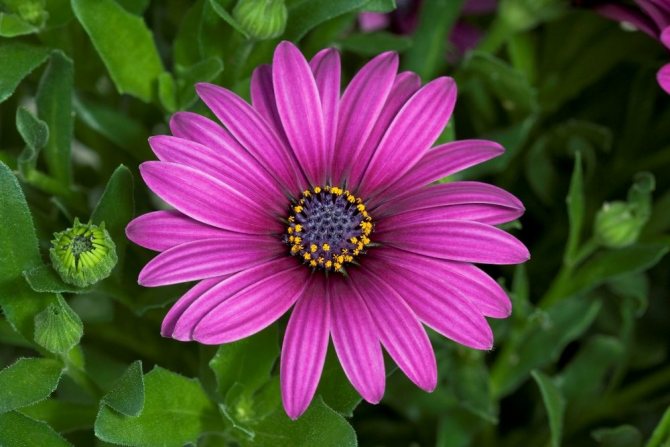

In art
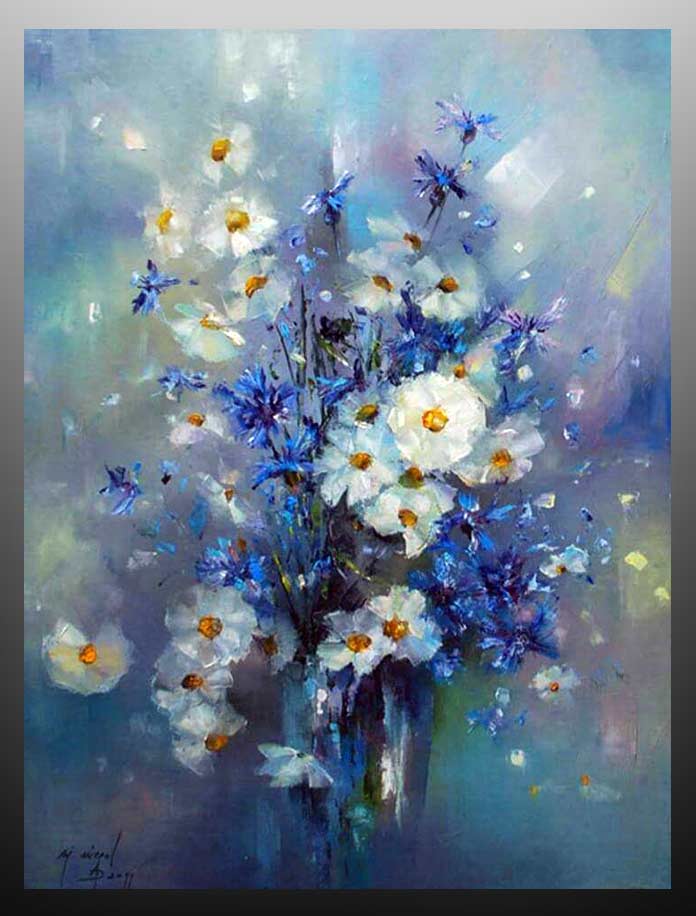

The field of daisies has always been a source of inspiration for painters. And besides the photo, you can admire the image of the forest beauty in the paintings.
The field of daisies is especially impressive against the backdrop of the rising or setting sun. Indeed, a truly sunny flower can rightfully compete with the heavenly body in tenderness and warmth.
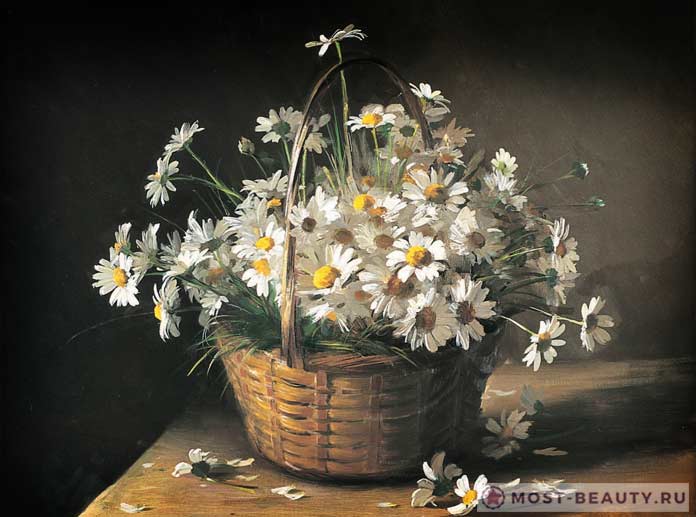

Planting seedlings in open ground
Special conditions and care when planting an osteospermum flower are not required. This plant is placed in the soil in the form of seedlings. Experts recommend the procedure to be performed at the end of May. Osteospermum prefers sunny locations, however, it can also be grown in shaded areas.
When planting seedlings, the distance between flowers should be observed. It should be no more than 25 and no less than 20 centimeters. It is noteworthy that the holes for planting should be of such depth that both the root system and the earthen lump fit there completely.
Seedlings are rolled out of the pot into a pre-prepared hole. After that, it is filled with nutritious soil mixture, which can be purchased at a specialized store or made on its own. It consists of humus, sod and leafy soil. In addition, fine sand is added to the substrate. All this should be mixed in one to one proportions. When the planting of seedlings is completed, it needs to be watered with plenty of water. Osteospermum blooms in mid-June.
Chamomile medicinal use
The medicinal plant chamomile has the following effects on the human body:
- Strengthens the immune system. The regular addition of the herb when making tea reduces the risk of developing acute respiratory viral infections (influenza, ARVI).
- Anti-inflammatory action. This is achieved due to the content of biologically active substances.
- Antiseptic. The use of a decoction or infusion helps to suppress the reproduction of pathogenic microbes (viruses, bacteria, fungi).
- Hemostatic (styptic). This property is possessed by the flower baskets of the plant.
- Anticonvulsant (anticonvulsant).
- Calming (sedative).
- Hypnotic. The essential oils in chamomile improve sleep at night.
- Light pain reliever.
- Gastroprotective (protects the walls of the stomach from aggressive factors).
- Weak astringent. When chamomile enters the stomach, a protective film is created that protects the mucous membrane from gastric juice and reduces the risk of developing gastritis.
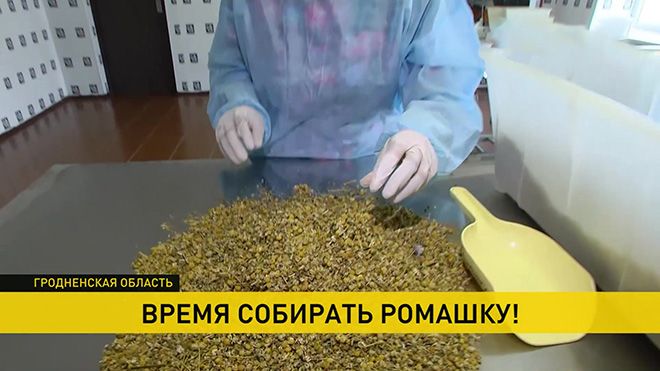

- Choleretic. Bile is produced in the liver and portions out of the gallbladder into the lumen of the duodenum. The plant improves the excretion of bile and normalizes digestion.
- Diaphoretic. The plant enhances the function of the sweat glands and the elimination of toxins from the body through perspiration.
- Antispasmodic. The use of chamomile in the form of tea reduces the severity of pain syndrome against the background of spasm of smooth muscle organs (uterus, stomach, intestines, gallbladder).
- Carminative. The use of decoctions and infusions based on chamomile reduces the formation of gas in the intestines. It is used for diseases of the digestive system, errors in diet and functional disorders, accompanied by severe bloating (flatulence).
- Antiallergic. Chamomile is hypoallergenic. It reduces the symptoms of an allergic reaction (skin rash, hives, itching, redness) by acting as a mild antihistamine.
- It has a beneficial effect on the central nervous system, reducing depression.
- Vasodilator (dilates the arteries that feed the brain).
- Promotes healing of wounds, burns and other skin injuries.
- It has a cytostatic (antitumor) effect.
The following diseases and pathological conditions can be treated with chamomile:
- Gastritis (acute and chronic). This is an inflammatory disease of the stomach, manifested by pain in the epigastric zone after eating and on an empty stomach, bloating, nausea, heartburn (with increased acidity). Chamomile reduces the severity of pain. It is taken orally after meals.
- Gastroduodenitis (combined inflammation of the stomach and duodenum).
- Gastropathy.
- Duodenitis (inflammatory disease of the duodenum).
- Peptic ulcer disease. Chamomile reduces inflammation of the mucous membrane during the formation of ulcers, protects the defect from the effects of hydrochloric acid, and facilitates the course of the disease.
- Enterocolitis (inflammation of the small and large intestines). Manifested by abdominal pain, defecation disorder (constipation, diarrhea and their alternation), flatulence, weight loss and asthenovegetative syndrome. Chamomile can be drunk with chronic inflammation and enterocolitis against the background of acute intestinal infections. The plant eases the spasm of the smooth muscles of the intestines, thereby reducing pain.
- Hemorrhoids. The plant strengthens blood vessels, helps to stop rectal bleeding and reduces pain during and after bowel movements.
- Diseases of the gallbladder and bile ducts (cholecystitis, cholangitis). With these pathologies, bile stagnation is often observed. Chamomile has a choleretic effect, reducing the risk of gallstones.
- Respiratory disorders (cough) against the background of bronchospasm and airway edema. Due to its anti-inflammatory and anti-allergic action, chamomile reduces tissue swelling, making breathing easier.
- Acute respiratory viral infections (influenza, parainfluenza, adenovirus and rhinovirus infections).
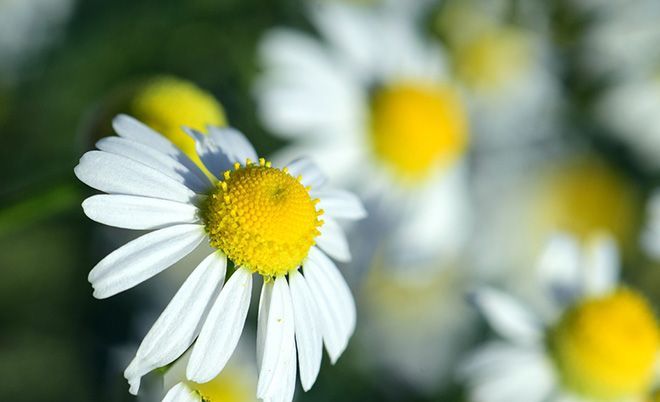

- Systemic diseases characterized by damage to the connective tissue (lupus erythematosus, dermatomyositis, scleroderma, rheumatoid arthritis, rheumatism).
- Toothache.
- Inflammatory diseases of the oral cavity, including gingivitis, glossitis and stomatitis.
- Toothache.
- Convulsive syndrome.
- Sleep disturbances (frequent awakenings, prolonged falling asleep, nightmares).
- Migraine. Chamomile reduces the intensity of headaches and the frequency of attacks.
- Intoxication and poisoning.
- Burkitt's lymphoma (non-Hodgkin's lymphoma). With this pathology, chamomile acts on lymphoblastic cells, normalizes the processes of cell division and reproduction. The plant is used as a traditional medicine and is not the main treatment. The aerial part of the plant is mainly used.
- Pulmonary edema. Chamomile protects cells and vascular membranes.
- Menstrual irregularities.
- Premenstrual syndrome with severe spasmodic pain.
- Inflammatory diseases of the genitourinary organs (urethritis, cystitis, pyelonephritis, vaginitis, prostatitis, vesiculitis). Chamomile acts as a uro-antiseptic, inhibiting the growth of microbes (Escherichia coli, cocci, chlamydia, fungi).
- Benign prostatic hyperplasia. Chamomile is used in combination with other herbs to reduce the swelling and size of the prostate, making it easier to urinate.
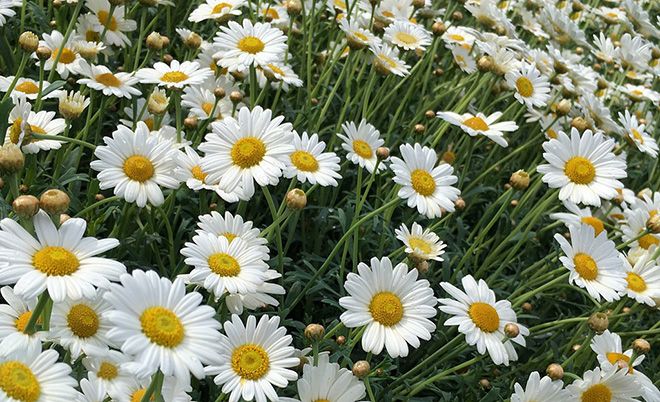

- Dysbacteriosis.
- Pathology of ENT organs (sinusitis, otitis media, pharyngitis, inflammation of the tonsils).
- Skin diseases of a fungal nature (dermatomycosis) and others (eczema, seborrhea of the head, hyperkeratosis).
- Increased irritability.
- Allergic diseases (bronchial asthma).
- Nervous tics.
- Depression.
- Heatstroke. Chamomile is used externally as a lotion.
- Sprain.
- Exudative diathesis. Chamomile is used as an essence.
- Malaria (as a traditional medicine).
- External tuberculosis (skin, mucous membranes).
- Ophthalmic diseases.
Possible contraindications
Chamomile has been called the most harmless medicinal plant, but it can cause some side effects. First of all, chamomile-flower field is contraindicated for pregnant women, and at the stage of lactation, its use should be limited.
In the presence of chronic pathologies or the use of a separate group of drugs, you should consult a specialist. Chamomile medicines are also contraindicated in the presence of individual intolerance.
Key side effects include:
- Increased blood pressure.
- The likelihood of bleeding.
- Vomiting reflex.
- Puffiness.
- Allergies and itching.
Contraindications for long-term use of chamomile preparations
Chamomile can be collected and dried on your own, or you can buy ready-made medicinal raw materials at the pharmacy.
Remember! Before long-term use of chamomile, you should consult a specialist. Self-medication is unsafe and may not cure, but damage your health.
Even the safest herb can cause poisoning and even fatal. Poison or medicine - all the difference is in the concentration and dosage of taking the drug. Therefore, without observing the instructions, you cannot independently (from the ceiling) prepare even the most harmless water decoctions. Only after talking with a specialist doctor can you start treatment.
An overdose in taking medicinal preparations from chamomile leads to increased excitement of the nervous system, cough, dizziness, and unpleasant chills. Diarrhea, allergic skin rashes may begin. You can not take drugs from chamomile (teas, infusions, decoctions) during pregnancy and gastritis acciadic.
Of course, it is almost impossible to cure a serious disease with herbs alone. But with the parallel use of drugs officially prescribed by a doctor and various herbal preparations, it is possible to accelerate recovery, relieve the inflammatory process, and increase immunity.
"Daisies" blooming until autumn
In this selection, we have collected not only chamomile-like plants that bloom in autumn, but also those, most of which bloom in the second half of summer, but also captures September. In a word, those that are in bloom right now.
Arctotis
Like all chamomile-like flowers, arctotis has saucer-shaped inflorescences. Petals can be either white or orange, ocher, purple, purple, yellow, pink. Externally, the inflorescences are also similar to a gerbera.
The height varies depending on the type and variety of plants, but usually does not exceed 15-20 cm. The exception is steacholist arctotis, which can reach 1 m in height.
The most common perennial species - arctotis hybrid, arctotis short-stemmed, arctotis stemless, arctotis stekhasolistny - are grown as annuals or biennials.
Arctotis bloom from July to September.
Gatsania
Gatsania (or gazania) is an African beauty that can be mistaken for chamomile from afar. But upon closer inspection, it is easy to notice that, unlike the shy chamomile, it boasts a huge variety of color options for the petals: here they are yellow-orange, and pink, and purple. Moreover, many of the flowers have a bright colored ring at the base or striped petals.
The size of the inflorescences can exceed 10 cm in diameter. Some species and varieties of gatsanias may resemble gerberas.
Flowering lasts all summer until autumn. Gatsania hybrid and long-shot gatsania bloom in the second half of summer and bloom until mid-autumn.
Gerbera
Breeders know about 7 dozen species of gerberas. Depending on the variety, the height of the peduncles can be from 25 to 60 cm. The color of the inflorescences can also be varied - white, orange, red, yellow, pink, crimson.
Gerberas love the sun and warmth, so in the middle lane they are grown in containers on balconies and patios, in pots at home or in greenhouses.
Venidium
Venidium is an infrequent guest in our gardens. It is usually grown in containers and pots.
The most common type of this flower is the lush venidium. He has rather large flowers - their diameter reaches 10 cm.The plant itself grows up to 70 cm.
The flowers have a dark center and a bright orange-purple ring around it.
Venidium blooms from late July until frost.
Kosmeya
Kosmeya (or cosmos) is a popular plant in midland gardens. This is a rather "independent" herbaceous annual, which does not require special care and reproduces without problems by self-seeding.
The most popular of this flower is cosmea double-feathery... Her flowers are most often simple, but there are also double varieties. The colors of the petals are varied: purple, lilac, pink.
Have sulfur-yellow cosmos inflorescences in ocher-orange tones. From afar, it can be mistaken for marigolds.
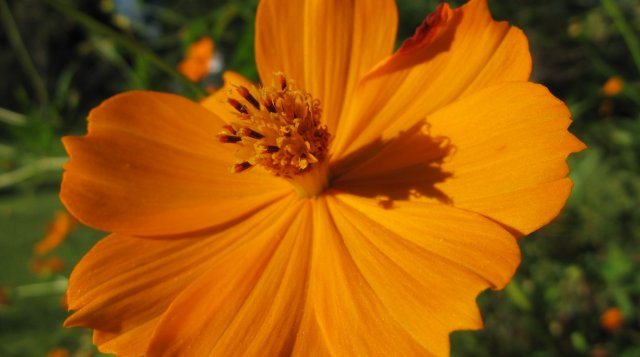

The rarest species of this plant is kosmeya chocolate (also called black or blood red cosme). Her flowers are a really deep brownish-burgundy hue, and, most surprisingly, exude a subtle chocolate aroma!
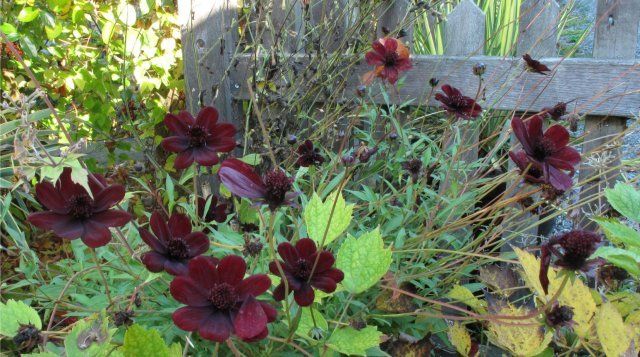

Unfortunately, in cold climates it grows only in containers and requires wintering indoors.
Coreopsis
Coreopsis look like brightly colored daisies. Depending on the type and variety, the inflorescences have yellow, orange, pink, purple petals.
Height varies greatly from species to species. For example, bushes of auricular coreopsis grow up to 30 cm, in large-flowered coreopsis - up to 100 cm.Flowering occurs in the second half of summer and early autumn: from July to September.
Coreopsis prefers open, sunny areas with good drainage. This is especially important in winter - during a thaw, the flower can rot if it is planted in a heated place.
Osteospermum
Osteospermum is also known as the Cape daisy, and in the West it is also known as the African daisy. Its obvious advantage is lush flowering until late autumn, because cold temperatures stimulate the opening of buds.
The ideal location for osteosperum is in areas well warmed by the sun. However, it cannot be called a sissy - it does not lose its decorative effect even on gloomy, rainy autumn days.
Sunflower
Of course, to confuse table sunflower with chamomile, you need to try hard. But among the decorative sunflowers there are enough varieties that are very similar to this flower.
For example, the small-headed sunflower of the Lemon Queen variety looks like a cross between chamomile and rudbeckia.
In warm climates, sunflowers bloom until frost.
- 9 adorable sunflower varieties for a vibrant flower garden
Color your garden with these cheerful sunflowers!
Jerusalem artichoke
Like sunflower, Jerusalem artichoke, or earthen pear, plants are both decorative and table. Only, unlike the first, it has good tops and roots.
Jerusalem artichoke blooms with charming lemon-yellow inflorescences and at the same time is able to winter in the garden even without shelter!
Flowering occurs in August-September.
Ursinia
One-year ursinia is most often grown in culture. This plant is native to Africa, so it is used to good lighting.
In the middle lane, dill ursinia is widespread, which can be identified by its characteristic pinnately dissected leaf shape, and ursinia is beautiful.
The plant grows up to 30-50 cm in height. The exception is dwarf ursinia - its "height" does not exceed 15 cm.
Ursinia continues to bloom from June to early September.
Chrysanthemum
Chrysanthemum is a traditional plant in the autumn garden. Korean chrysanthemums, which are most often used in bouquets, are difficult to confuse with daisies - they are easily recognizable. But less popular species, for example, Indian, arctic or autumn chrysanthemum, are surprisingly reminiscent of this modest flower.
By the way, the bushes of autumn chrysanthemum can reach 160 cm in height.
- Chrysanthemums - how to grow a healthy plant?
We answer 3 main questions about chrysanthemums.
Chrysanthemum bloom lasts from late summer until late autumn.
Echinacea
There are 10 known types of Echinacea, but Echinacea purpurea is the most common. Despite the telling name, the color of the inflorescences can be not only purple, but also red, yellow, cream.
It is quite easy to recognize Echinacea by its characteristic convex center and drooping petals.
Echinacea can reach a height of 1.4 m! It can be propagated both vegetatively and by seeds.
This plant blooms from July to September.
- Echinacea - a plant for decorating a flower garden
Erigeron
Erigeron
Erigeron or small petals refers to perennials from the Aster family. Its spherical bushes, consisting of a huge number of branched shoots, can reach a height of 60 cm. The leaves are lanceolate on the bush and more rounded at the base.
Flower baskets can be placed either singly or in several pieces. Flowers can be pink, yellow, or various shades of purple. Flowering begins in early summer and lasts until late autumn.
Care
Erigeron will not require close attention and care. It is enough to comply with the following conditions:
- The soil must be alkaline, without stagnant water.
- The site is chosen sunny and well-ventilated.
- Overgrown specimens must be tied up.
Among the variety of garden flowers, chamomile occupies a leading position. They fit perfectly into a wide variety of flower gardens. And subject to the elementary rules of agricultural technology, they will surely thank you with abundant and long flowering.
Ursinia
The shape of the flower is similar to that of chamomile, but the color of the petals is very different. They are mostly golden with a tinge of orange. The color is bright and rich, easily attracts attention. It is noteworthy that the inside of the flower is lighter than the outside. For example, a yellow petal on the inside will be brownish purple on the back. The opened buds have a diameter of 5-6 cm.
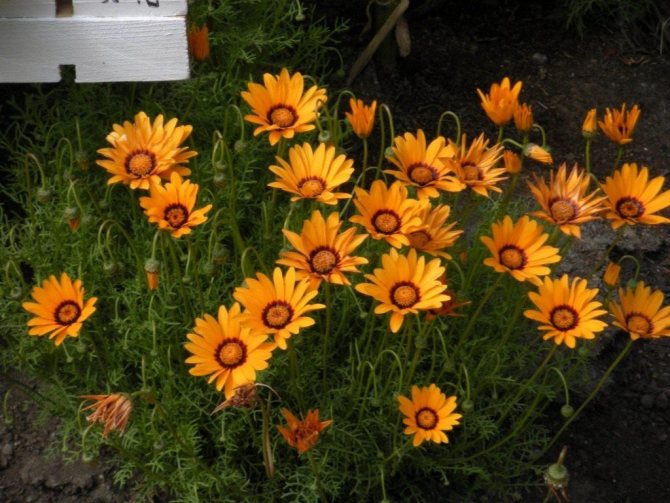

Shoots grow up to 30-60 cm, covered with dark green foliage. The culture is grown both annual and perennial. Possesses resistance to negative temperatures, undemanding to the conditions of detention. Flowering continues until night frosts appear.
Photo of seeds
After fertilization of the middle flowers in the inflorescence, seeds develop in them, which later fall to the ground. At the peak of flowering, the baskets contain flowers at different stages of development. Some of them already contain formed seeds, while others are just blooming.
In general, already at the very inflorescence in the section, you can see the ovaries, from which seeds will develop after fertilization.
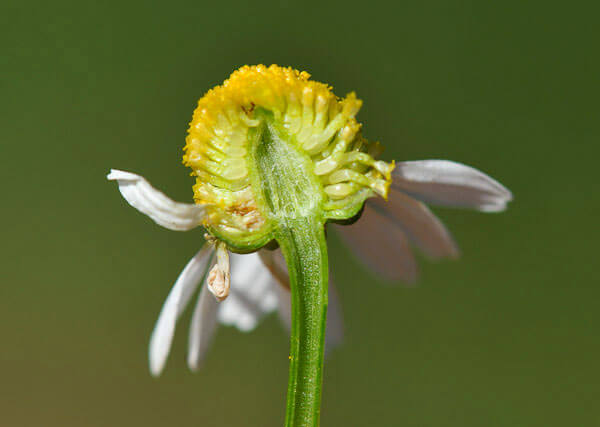

Each of these "columns" after fertilization will turn into an elongated seed.
This is what chamomile seeds look like on a flower basket:
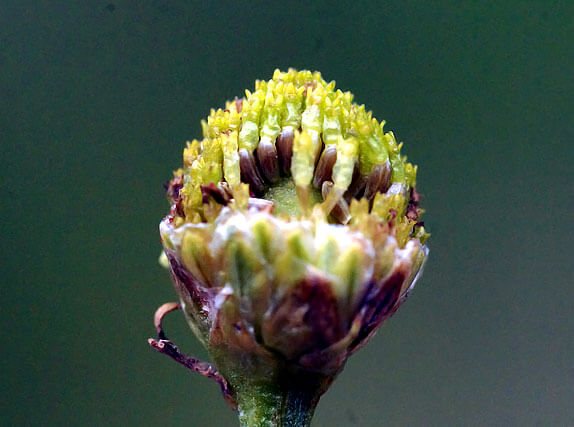

And so - they are already assembled, ready for storage or for sowing into the soil:
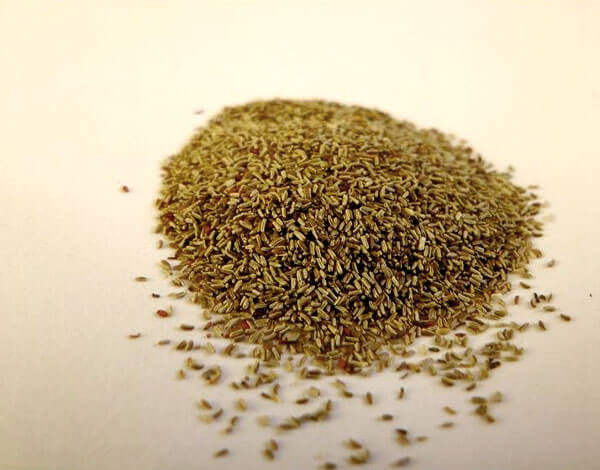

Each seed has a somewhat elongated shape, some of them are curved in length, all have several faces.
By the number of facets, these seeds can be distinguished from odorless chamomile seeds. This species is called three-ribbed precisely because its seeds have strictly 3 edges, and therefore, three "ribs". Chamomile seeds have much more ribs.
The photo below shows odorless three-ribbed seeds:
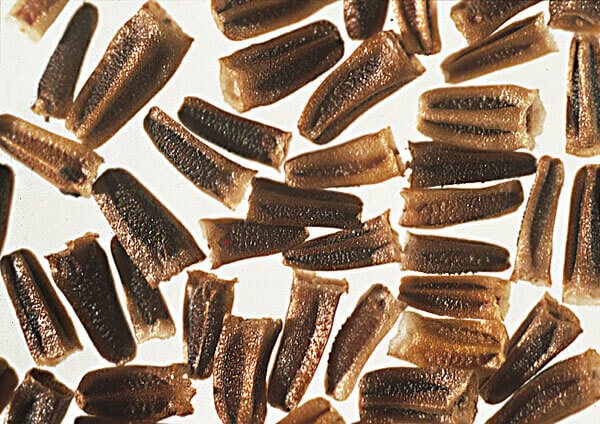

And here is a photo of chamomile seeds:
In appearance, it is very difficult to distinguish seeds that can germinate from those that are "stale". Outwardly, they are the same, but the living seeds should be separated by pouring them directly from the package into salt water (1 teaspoon of salt per glass of water). Seeds that can sprout will settle to the bottom of the glass, the dead ones will float up. After that, the good seeds are washed with clean water and planted.
Aerial part of the plant
The stem of the chamomile bush is thin, hollow inside and looks like a typical blade of grass. Usually, its branching begins from the ground itself, but sometimes the entire bush consists of one stem, from which several peduncles with inflorescences branch off only at the very top.
The peduncles themselves are quite long and thin, they seem very frail.
Chamomile leaves are small, narrow, according to the scientific description, "double- or triple-pinnately dissected into narrow linear or subulate lobes." It is easier to show in the photo than to describe it more clearly:
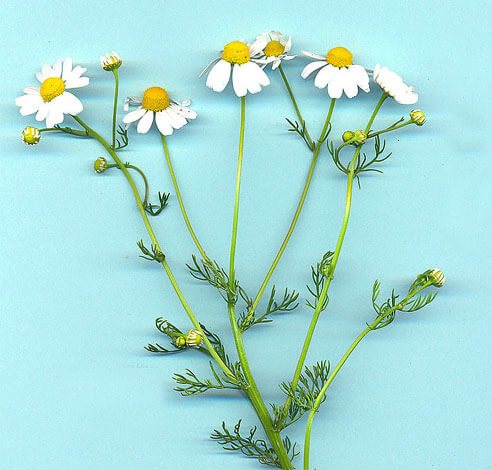

There are many such leaves on the stems, they grow from the base of the stem to the very tops with inflorescences.
In addition to the leaves along their entire height, the stems of chamomile are covered with small hairs, almost invisible to the naked eye. This pubescence is clearly visible only with microscopy.
The color of the stems and leaves of a young plant is rich green, as the bush ages, it dims, begins to turn yellow from the base, until gradually the entire bush withers completely. This happens in the fall, since specifically chamomile is an annual plant.
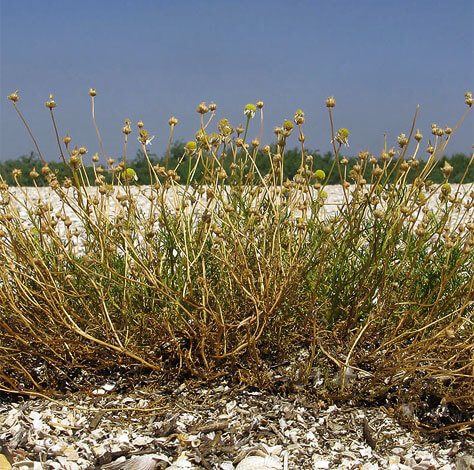

A dying bush from which seeds are crumbled.
Other types of daisies can survive the winter and bloom next year. Before the cold weather, their flower stalks dry out, and for the winter they leave only with a rosette of soil leaves, which winter safely under the snow, or in warm regions without it.
Features of growing from seeds
In the following sections, we will talk about planting and caring for a perennial garden chamomile with a photo.
Sowing seeds
You can grow chamomile in two ways: using seedlings and in a seedless way. If necessary, sowing seeds is carried out directly into the ground, however, the seedling method is more reliable.
Sowing seeds for seedlings is carried out in the spring (in March). For sowing, a planting container (with cells) is needed, which is filled with light and moist soil, which contains peat and sand (in a 1: 1 ratio). Then, two or three seeds should be placed in each cell, and then sprinkled with a thin layer of soil.
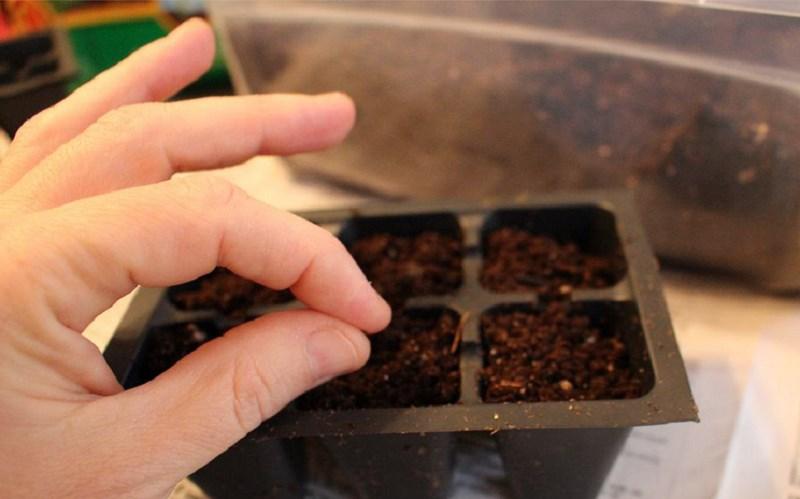

Cover the container with transparent foil, then place it next to the window opening. But it is forbidden to place the container directly on the windowsill, since bright sunlight can harm the germination process. The soil should be sprayed immediately after it becomes dry.
Seedling
If the seedlings are located in a room with normal room temperature, then the first shoots should be expected 10-14 days after sowing. When the first shoots appear, remove the protective film from the container and place the container on the windowsill, where the plant will receive a sufficient amount of sunlight.
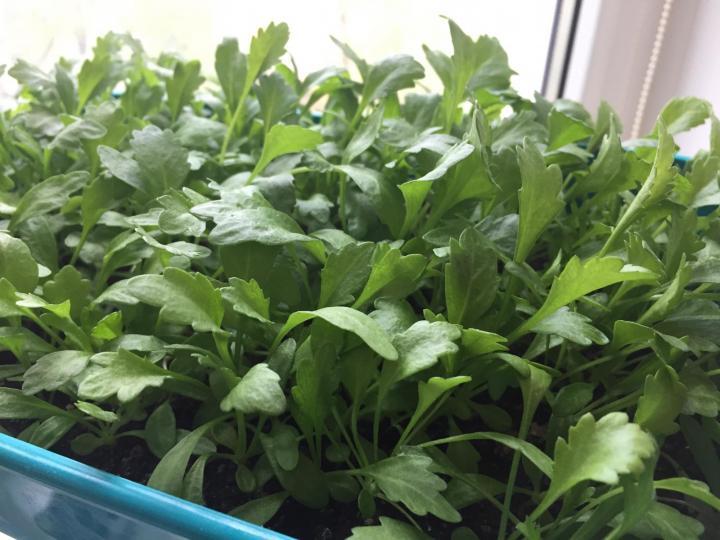

When the sprouts reach a height of 5 cm, they will need to be thinned out. To do this, it is necessary to remove the weakest shoots and leave one strong and sturdy plant in each cell.
Note! Weak plants should not be pulled out of the ground, as this can harm the root system of the remaining chamomile. It is necessary to carefully break off the sprout above the ground.
The time of planting seedlings in the ground
Transplanting seedlings into open ground is carried out a month and a half after the appearance of the first shoots. Also, during planting, there should no longer be frosts and the threat of their appearance. The most favorable place for growing chamomile will be a well-lit area with sunlight, with a neutral or limestone soil.
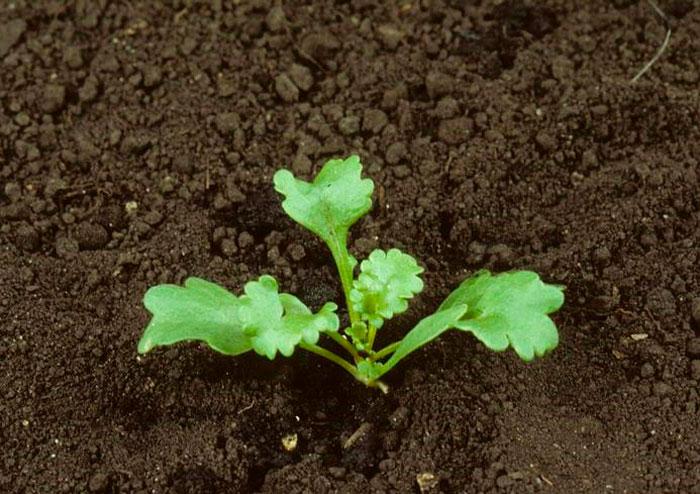

Important! Groundwater must be deep underground.
Transplanting
Before planting daisies, it is necessary to prepare the site in advance. For this, the earth must be dug up and complex fertilizers for flowers must be applied. The pits should be 20-30 cm deep, with a distance of 20-40 cm between the planting holes. The depth of the pits and the distance between them are influenced by the variety of chamomile that should be planted.
The sprout must be carefully removed from the container along with a clod of earth and carefully placed in the recess. Then cover it with soil and lightly tamp the surface. After that, watering is carried out. The bush chamomile will begin to bloom next year.
Gazania
Gazania
Gazania hybrid is a bright representative of the Aster family. The plant of this species is small in height, its leaves are collected in a basal rosette. Below the leaf blades are covered with silvery pubescence, which protects gazania from cold and helps prevent moisture loss during heat.
The flowering period lasts from June until frost. All this time, peduncles constantly appear from the middle of the outlet.
Gazania inflorescences are baskets with petals of bright unusual colors. They can be either plain or striped.
Care
For successful growth, development and abundant flowering, it is required to follow the rules for growing gazania:
- The location is sunny.
- Watering is required in moderation. Prolonged waterlogging is destructive.
- The soil should be light and fertile with good drainage.
- During the season it is necessary to fertilize with fertilizers.
Rudbeckia
The flower belongs to the tall category, the minimum height of the bush is 50 cm, and the maximum reaches 2 meters. The plant has no special care requirements, moreover, it is perennial and can decorate the garden in one place for up to 5 years.
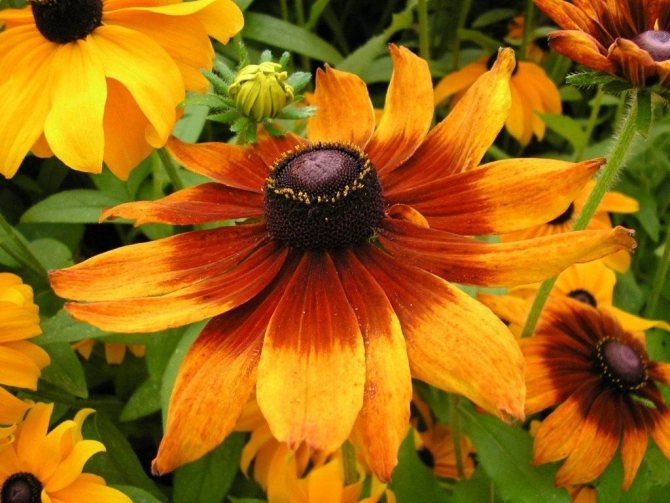

Chamomile-like flowers come in yellow, pink, scarlet, orange, and cream. There are two-color species, where the darker base lightens as it approaches the edge of the petal. There are 40 varieties in total.
Chemical composition
Let's analyze the most common type of Matricaria - chamomile. Its main components:
- vitamins (B1, B2, E, C and PP);
- saturated fatty acids;
- macronutrients (potassium, calcium, phosphorus, sodium, magnesium);
- trace elements (iron);
- digestible carbohydrates (mono- and disaccharides);
- tannins and protein substances;
- essential oil.
Chamomile is unique in its content of rare plant substances. Glycoside increases appetite and increases bile secretion. Hamazulen in the composition of the plant enhances the effect of the essential oil and accelerates the heart rate.
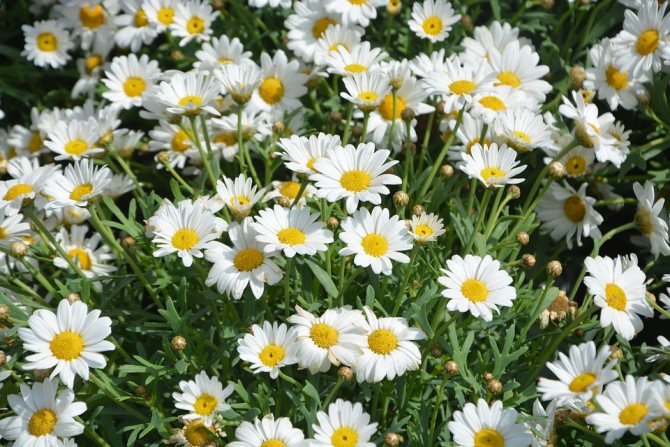

Pharmacy chamomile is unique in its chemical composition
Medicinal properties and harm
The representative of the Astrov family brings benefits when making the following diagnoses:
- respiratory problems;
- gastritis and pancreatitis;
- damage to the skin;
- stomatitis;
- migraine;
- flatulence;
- hemorrhoids;
- cystitis;
- bleeding after childbirth;
- painful menstruation;
- PMS;
- toothache;
- poor appetite;
- increased excitability;
- insomnia.
Contraindications for the use of chamomile herb:
- allergy;
- predisposition to diarrhea;
- anacid gastritis;
- pregnancy;
- lactation;
- the use of aspirin and blood thinners.
In other cases, a representative of the Astrov family is absolutely safe for the human body. For insurance, the infusion is dripped from it onto the inside of the hand and awaits the result of an allergy test. The use of pharmacy chamomile and its use for medicinal purposes should be dosed. Otherwise, the person will begin to suffer from regular migraine attacks.
The use of pharmacy chamomile should be dosed.

